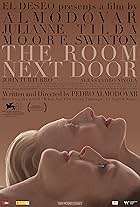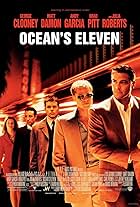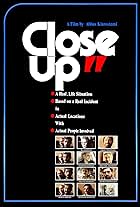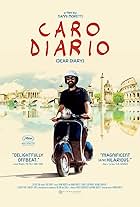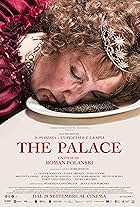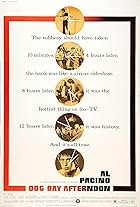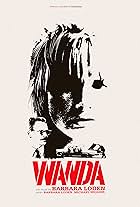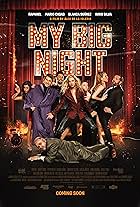Falkner1976
Joined Nov 2021
Welcome to the new profile
We're still working on updating some profile features. To see the badges, ratings breakdowns, and polls for this profile, please go to the previous version.
Ratings1.9K
Falkner1976's rating
Reviews160
Falkner1976's rating
Almodóvar's free fall since The Skin I Live In ( and 2011 is far away) is reflected in this parsimonious adaptation of a novel by Sigrid Nunez.
The source material seems the least suitable for the most recognizable talents of the director in his best days (1987-2011): Almodóvar wisely dressed his main plots with a motley network of motifs and secondary characters, and in his best films he knew how to give them a certain coherence as the whole. He may have been aware of his limited ability to develop a simple plot. It is good to be aware of our limitations.
Here we have a minimalist story of two characters, we have two magnificent actresses, extraordinary cinematography, stylized and elegant sets, interiors and costumes. But unfortunately we also have some dialogues that cause blush in their frequent ineptitude and emptiness. And above all, Almodovar, aware that he is not capable of going deeper and justifying the footage with such a squalid plot, sees the need to draw on his old strengths, which are no longer so strong (partly because here there is not a "collage" of genres that justify the "collage" of plots) and introduces a handful of secondary characters that are absolutely superfluous.
For the same reason, and like those clumsy adaptations of plays that tried to take advantage of the virtues of cinema by "opening" them to other settings and time periods that were impossible to show in the theater, Almodóvar truffles his squalid plot with several flashbacks of terrible taste. It is the latter that gives rise to the worst scenes, some certainly unworthy of a director of his stature (even in his low hours).
The scenes of the protagonists' youth, the burning of the house... barely have the content to be one more verbalized element (of so many that there are in a film that is mainly dialogue), and the journalistic adventures (with homosexual priest included) only have reason to exist as a nod from Almodovar to his usual themes.
The most intentionally poetic elements result in somewhat facile evidence: the allusions to the magnificent ending of Joyce's The Dead and Huston's magnificent film version end up being routine; the melodramatic and bombastic phrases squeak like an unsatisfactory attempt to elevate a dialogue that at no time goes beyond the hackneyed and the most repeated commonplace.
Almodovar is not a profound, or analytical, or intellectual director. It never has been. Given his past successes and his recent failures, one would say that if he is asked to develop a story around a simple but transcendental motif and required to stick to that element, he will not be able to write more than half a page and will prove incapable of going deeper in it and squeeze out all its possibilities. But remove that limitation, let him give free rein to his inventiveness and a small element will bring to mind many other elements and motifs that are on his mind, and he will look for a way to assemble them so that some elements can reflect others or complement each other satisfactorily. Or that's what we think he was capable of... years ago.
Now, even the most remarkable things seem like pure craftsmanship: the performances of two great Anglo-Saxon actresses, the exquisite cinematography, the elegantly colorful sets, have a final tone of obvious professionalism, a plasticized and artificial appearance that has become a trademark of the house, very far from the earthly quality, the lack of fear of getting dirty and the casualness of his old best films.
The source material seems the least suitable for the most recognizable talents of the director in his best days (1987-2011): Almodóvar wisely dressed his main plots with a motley network of motifs and secondary characters, and in his best films he knew how to give them a certain coherence as the whole. He may have been aware of his limited ability to develop a simple plot. It is good to be aware of our limitations.
Here we have a minimalist story of two characters, we have two magnificent actresses, extraordinary cinematography, stylized and elegant sets, interiors and costumes. But unfortunately we also have some dialogues that cause blush in their frequent ineptitude and emptiness. And above all, Almodovar, aware that he is not capable of going deeper and justifying the footage with such a squalid plot, sees the need to draw on his old strengths, which are no longer so strong (partly because here there is not a "collage" of genres that justify the "collage" of plots) and introduces a handful of secondary characters that are absolutely superfluous.
For the same reason, and like those clumsy adaptations of plays that tried to take advantage of the virtues of cinema by "opening" them to other settings and time periods that were impossible to show in the theater, Almodóvar truffles his squalid plot with several flashbacks of terrible taste. It is the latter that gives rise to the worst scenes, some certainly unworthy of a director of his stature (even in his low hours).
The scenes of the protagonists' youth, the burning of the house... barely have the content to be one more verbalized element (of so many that there are in a film that is mainly dialogue), and the journalistic adventures (with homosexual priest included) only have reason to exist as a nod from Almodovar to his usual themes.
The most intentionally poetic elements result in somewhat facile evidence: the allusions to the magnificent ending of Joyce's The Dead and Huston's magnificent film version end up being routine; the melodramatic and bombastic phrases squeak like an unsatisfactory attempt to elevate a dialogue that at no time goes beyond the hackneyed and the most repeated commonplace.
Almodovar is not a profound, or analytical, or intellectual director. It never has been. Given his past successes and his recent failures, one would say that if he is asked to develop a story around a simple but transcendental motif and required to stick to that element, he will not be able to write more than half a page and will prove incapable of going deeper in it and squeeze out all its possibilities. But remove that limitation, let him give free rein to his inventiveness and a small element will bring to mind many other elements and motifs that are on his mind, and he will look for a way to assemble them so that some elements can reflect others or complement each other satisfactorily. Or that's what we think he was capable of... years ago.
Now, even the most remarkable things seem like pure craftsmanship: the performances of two great Anglo-Saxon actresses, the exquisite cinematography, the elegantly colorful sets, have a final tone of obvious professionalism, a plasticized and artificial appearance that has become a trademark of the house, very far from the earthly quality, the lack of fear of getting dirty and the casualness of his old best films.
Disappointing hodgepodge that entertains in its first half but ends up not taking itself seriously at all and wasting its undoubted possibilities.
The first part raises interesting ideas, but so many and so little compatible in a coherent development, that it immediately seems that the author does not know which ones to decide on and the plot loses focus. The interest of the story is immediately clear that it would be that Elisabeth and Sue are one, one mind in two bodies, as the messages from the substance supplier remind them. Assuming that it fulfills the pact, that Elisabeth continues to be alternately Elisabeth and Sue, the film could have delved into very interesting aspects of the story.
But the film immediately prefers that they be two minds, where neither lives nor remembers what the other does, and everything becomes a fight between selfish witches who decide to destroy each other without remembering that, in some way, they are the same, or that at least they depend on each other. The plot therefore ceases to make the slightest sense: assuming that the experiment could be of interest to some disturbed mind, what interest for an aging person is to alternate with another younger version of himself if he is not going to be conscious or enjoy the hours of that younger self? All the very complex logistics of living half the time and obviously isolated from everything?
The last half hour is already a nonsense that drags on unnecessarily (the film should have been much less than two hours by eliminating unnecessary, duplicated or simply eternalized scenes in repetition) and makes it clear that everything is quite disappointing and gimmicky entertainment. There is not even an attempt at any time to make the development of the plot minimally credible, not even within the rules of the science fiction story itself.
The idea comes from yesteryear of course (Stevenson and Jekyll/Hyde), and the main influence should be Cronemberg, but it ends up being Aronofsky.
Good performance by Demi Moore and good special effects, the best that can be said.
The first part raises interesting ideas, but so many and so little compatible in a coherent development, that it immediately seems that the author does not know which ones to decide on and the plot loses focus. The interest of the story is immediately clear that it would be that Elisabeth and Sue are one, one mind in two bodies, as the messages from the substance supplier remind them. Assuming that it fulfills the pact, that Elisabeth continues to be alternately Elisabeth and Sue, the film could have delved into very interesting aspects of the story.
But the film immediately prefers that they be two minds, where neither lives nor remembers what the other does, and everything becomes a fight between selfish witches who decide to destroy each other without remembering that, in some way, they are the same, or that at least they depend on each other. The plot therefore ceases to make the slightest sense: assuming that the experiment could be of interest to some disturbed mind, what interest for an aging person is to alternate with another younger version of himself if he is not going to be conscious or enjoy the hours of that younger self? All the very complex logistics of living half the time and obviously isolated from everything?
The last half hour is already a nonsense that drags on unnecessarily (the film should have been much less than two hours by eliminating unnecessary, duplicated or simply eternalized scenes in repetition) and makes it clear that everything is quite disappointing and gimmicky entertainment. There is not even an attempt at any time to make the development of the plot minimally credible, not even within the rules of the science fiction story itself.
The idea comes from yesteryear of course (Stevenson and Jekyll/Hyde), and the main influence should be Cronemberg, but it ends up being Aronofsky.
Good performance by Demi Moore and good special effects, the best that can be said.
A period love story between two young women, with neat images, a very traditional narrative but with unusual elegance in the composition and magnificent performances. Thematically, the most original thing is its feminist positioning when telling us the unhappy love story of so many times.
Aside from the first and last scenes (in which no effort has been made to try to age the protagonists), the film is a long flashback. Narratively, the film does not propose anything particularly new.
The film revolves around women, their situation, their repression, their lack of opportunities and the relationships they can establish between them.
With some exceptions there are no men in the film, or rather no men are seen. Exceptions are limited to the first and last scenes. The men who appear have an unfriendly, rude, and uncooperative behavior; the men who do not appear only allow us to assume that they are even worse than those who do appear, since the film takes place in an unlikely paradise for women, but threatened even by the oppressive absence of men. You know, in a current common discourse, we start from the historical oppression of women to develop a discourse of militant lesbian feminism.
The image, like the sound, is of great purity, thanks to exquisite cinematography and lighting, very essential props and decoration, with soft and neutral colors on which the female figures dressed in strong primary colors stand out; to the special ability to capture the carnality of the skin and the texture of clothing; to silences barely disturbed by echoes of footsteps, by the quiet sound of gently placing a piece of cutlery, by the breathing of the characters or barely whispered dialogues.
The protagonists are magnificent, Adèle Haenel, when she is not smiling she has a permanently sulking expression that suits the role very well, and reflects character, stubbornness, distrust and frankly... a defensive character. Noémie Merlant is less intense and more internalized.
But with the plot the director aims to stronger wording, and a particular story seems to want to elevate itself to a universal paradigm: we no longer have two young people who fall in love, we have an entire female world that sees men as the oppressive tyrant, a world where emotional connection is only possible between women, and any contact with a man is unwanted, a sexual aberration from whose unwanted consequences women can only get rid of by helping each other in secret. Identifying the subjection to which women of the time were subjected to men with any feeling between the two sexes, Sciamma falls into that intransigent feminism, and incapable of understanding heterosexual sexual relations.
This banishment of the male figure from their world naturally gives rise to a society where the young noblewoman, the artist and the maid coexist oblivious to social differences and class privileges, in the name of that greatest of virtues, which is sorority. The lady cooks, while the painter pours the wine and the maid does the embroidery, and in the evening they reflect on texts by Ovid.
Here comes an artificial poetic license, Héloïse reads the story of Orpheus and Euridice, to give us a striking but implausible interpretation of the fable, which will serve the author to give her story a touch of melancholic and poetic renunciation, represent in a metaphor the path in which the story will continue, and serve as an image in the magnificent penultimate scene of the film.
Another scene, a nighttime gathering of villagers who sing, as if they were the most trained choir, complex harmonies with overtones of rusticity, a gathering in front of the bonfires with touches of a pagan festival, gives us an intense image, which is at the same time an obvious metaphor, As if the title of the film wasn't already enough.
There are more licenses, somehow forced, like those premonitory ghostly apparitions of Heloïse all in white.
But the worst is that final scene, in the theater, in which Marianne contemplates Héloïse in the opera box: it is topical and melodramatic, very far from the elegance and discretion in which the work has moved, and the emotional display of the actress, however commendable, only makes the scene even more redundant and hackneyed. It's sad especially because the previous scene is magnificent and could be a really effective ending.
Overall, a beautiful film, somewhat distant, very dense thematically, with a belligerent feminism in its most intransigent aspect, one of those that clearly advocate in vitro fertilization, but with a redundant and hackneyed ending. In any case, I find the excessively laudatory critical reception incomprehensible.
Aside from the first and last scenes (in which no effort has been made to try to age the protagonists), the film is a long flashback. Narratively, the film does not propose anything particularly new.
The film revolves around women, their situation, their repression, their lack of opportunities and the relationships they can establish between them.
With some exceptions there are no men in the film, or rather no men are seen. Exceptions are limited to the first and last scenes. The men who appear have an unfriendly, rude, and uncooperative behavior; the men who do not appear only allow us to assume that they are even worse than those who do appear, since the film takes place in an unlikely paradise for women, but threatened even by the oppressive absence of men. You know, in a current common discourse, we start from the historical oppression of women to develop a discourse of militant lesbian feminism.
The image, like the sound, is of great purity, thanks to exquisite cinematography and lighting, very essential props and decoration, with soft and neutral colors on which the female figures dressed in strong primary colors stand out; to the special ability to capture the carnality of the skin and the texture of clothing; to silences barely disturbed by echoes of footsteps, by the quiet sound of gently placing a piece of cutlery, by the breathing of the characters or barely whispered dialogues.
The protagonists are magnificent, Adèle Haenel, when she is not smiling she has a permanently sulking expression that suits the role very well, and reflects character, stubbornness, distrust and frankly... a defensive character. Noémie Merlant is less intense and more internalized.
But with the plot the director aims to stronger wording, and a particular story seems to want to elevate itself to a universal paradigm: we no longer have two young people who fall in love, we have an entire female world that sees men as the oppressive tyrant, a world where emotional connection is only possible between women, and any contact with a man is unwanted, a sexual aberration from whose unwanted consequences women can only get rid of by helping each other in secret. Identifying the subjection to which women of the time were subjected to men with any feeling between the two sexes, Sciamma falls into that intransigent feminism, and incapable of understanding heterosexual sexual relations.
This banishment of the male figure from their world naturally gives rise to a society where the young noblewoman, the artist and the maid coexist oblivious to social differences and class privileges, in the name of that greatest of virtues, which is sorority. The lady cooks, while the painter pours the wine and the maid does the embroidery, and in the evening they reflect on texts by Ovid.
Here comes an artificial poetic license, Héloïse reads the story of Orpheus and Euridice, to give us a striking but implausible interpretation of the fable, which will serve the author to give her story a touch of melancholic and poetic renunciation, represent in a metaphor the path in which the story will continue, and serve as an image in the magnificent penultimate scene of the film.
Another scene, a nighttime gathering of villagers who sing, as if they were the most trained choir, complex harmonies with overtones of rusticity, a gathering in front of the bonfires with touches of a pagan festival, gives us an intense image, which is at the same time an obvious metaphor, As if the title of the film wasn't already enough.
There are more licenses, somehow forced, like those premonitory ghostly apparitions of Heloïse all in white.
But the worst is that final scene, in the theater, in which Marianne contemplates Héloïse in the opera box: it is topical and melodramatic, very far from the elegance and discretion in which the work has moved, and the emotional display of the actress, however commendable, only makes the scene even more redundant and hackneyed. It's sad especially because the previous scene is magnificent and could be a really effective ending.
Overall, a beautiful film, somewhat distant, very dense thematically, with a belligerent feminism in its most intransigent aspect, one of those that clearly advocate in vitro fertilization, but with a redundant and hackneyed ending. In any case, I find the excessively laudatory critical reception incomprehensible.

